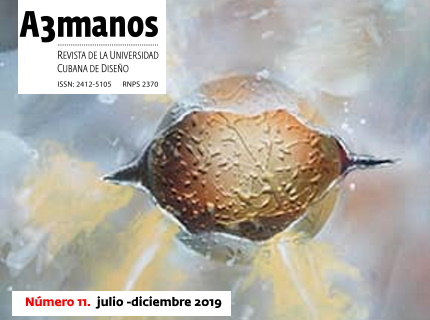The unnoticed revolution and BIM technology. New environment of multidisciplinary work in project´s enterprise.
##plugins.themes.bootstrap3.article.main##
Abstract
“The unnoticed revolution and technology Building Information Modeling (BIM). New multidisciplinary environments of work in project´s enterprise in Cuba” it is a paper that brings us closer to the surging of a new integrative paradigm that has his origins at the construction's sector. This paper has the following goals: 1) demonstrating how the contributions of the unnoticed revolution and BIM technology are influencing the multidisciplinary development of new work´s environment at the companies of project in Cuba and 2) meaning the importance of the multidisciplinary integration of the design at the new work´s environment based in technology BIM. Besides, it allows us verifying the existent narrow relationship between the new knowledge and practice the activity of the contemporary man. Science-technology-production-society is like a unit relational.
##plugins.themes.bootstrap3.article.details##

This work is licensed under a Creative Commons Attribution-NonCommercial-ShareAlike 4.0 International License.
- Attribution — You must give appropriate credit , provide a link to the license, and indicate if changes were made . You may do so in any reasonable manner, but not in any way that suggests the licensor endorses you or your use.
- NonCommercial — You may not use the material for commercial purposes .
- No additional restrictions — You may not apply legal terms or technological measures that legally restrict others from doing anything the license permits.
- ShareAlike — If you remix, transform, or build upon the material, you must distribute your contribution under the same license as the original. NOTE: This point applies to numbers 1 to 20 of the magazine with the previous CC-BY-NC-SA 4.0 license. Does not apply to the new CC BY-NC 4.0 license from Volume 11, Number. 21 (2024).
References
Alvarez, Y. (2018). El nuevo paradigma epistemologico de la complejidad y la nueva Tecnología Building Information Modeling (BIM). La Habana: Ediciones Futuro.
Alvarez, Y. (2018). El proceso inversionista cubano (PIC) y la tecnologia Building Information Modeling (TBIM). Una necesaria integración. La Habana: Ediciones Futuro.
Codina, P. S., & Díaz, C. D. (2006). La revolución contemporánea del saber y la complejidad social. Buenos Aires: CLACSO.
Consejo de Ministros. (2015). Normativas Generales del Proceso Inversionista. La Habana, Cuba: Gaceta Offila de la Republica de Cuba.
Delgado, C. J. (2007). Hacia un nuevo saber. La bioética en la revolucion contemporanea del saber. La Habana: Publicaciones Acuario Centro Félix Varela.
Eastman C., T. P. (2008). BIM Handbook: A Guide to Building Information Modeling for Owners, Managers, Designers, Engineers and Constractors.
Eastman, C., Fisher, D., Lafue, G., Lividini, J., Stoker, D., & Yessios, C. (1974). An Outline of theBuilding Description System. Carnegie-Mellon Univ., Institute of Phycal Planning. Pittsburgh, Pa.: Carnegie-Mellon Univ.
Frente de Proyecto. (2016). Balance Anual. La Habana: MICONST.
Frente de Proyecto. (2017). Balance Anual. La Habana: MICONST.
Hardin, B. (2015). BIM and Construction Management. Indianapolis: Wiley.
ISO. (2012). Framework for building information modelling (BIM) guidance. Switzerland: ISO.
Jover, J. N. (1999). La ciencia y la tecnología como proceso sociales. La Habana: Félix Varela.
Muriel, A. P. (2017). Implementación de la tecnologia BIM en la asignatura Proyectos de los Grados de Ingenierias Industrial de la Universidad de Extremadura. Estudios de competencia genéricas. España: Universidad de Extemadura.
NBIMS. (2012). National BIM Standard - United States. USA: National Institute of Building Sciences.






















